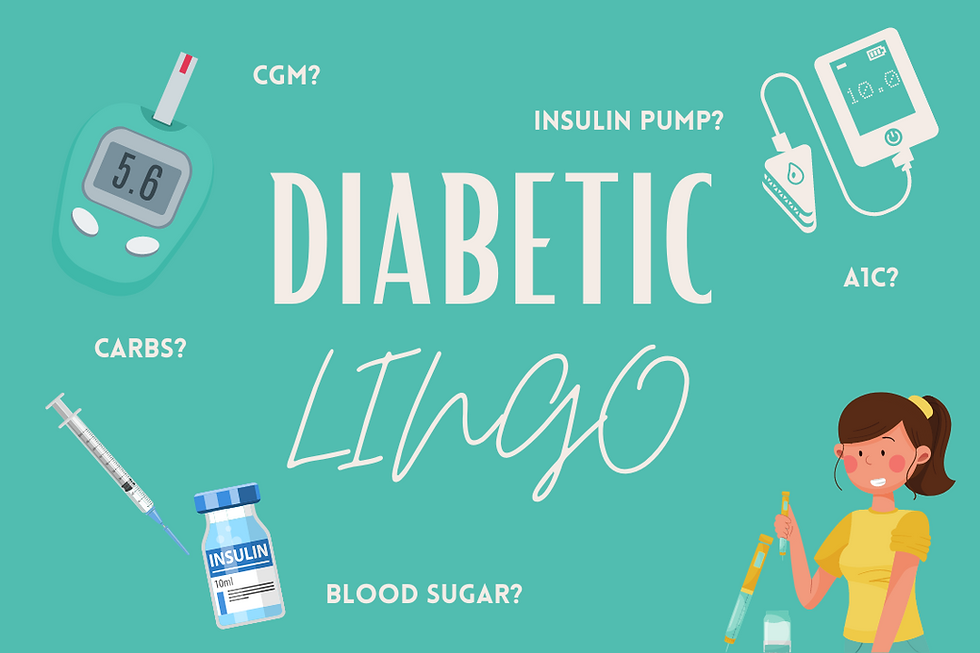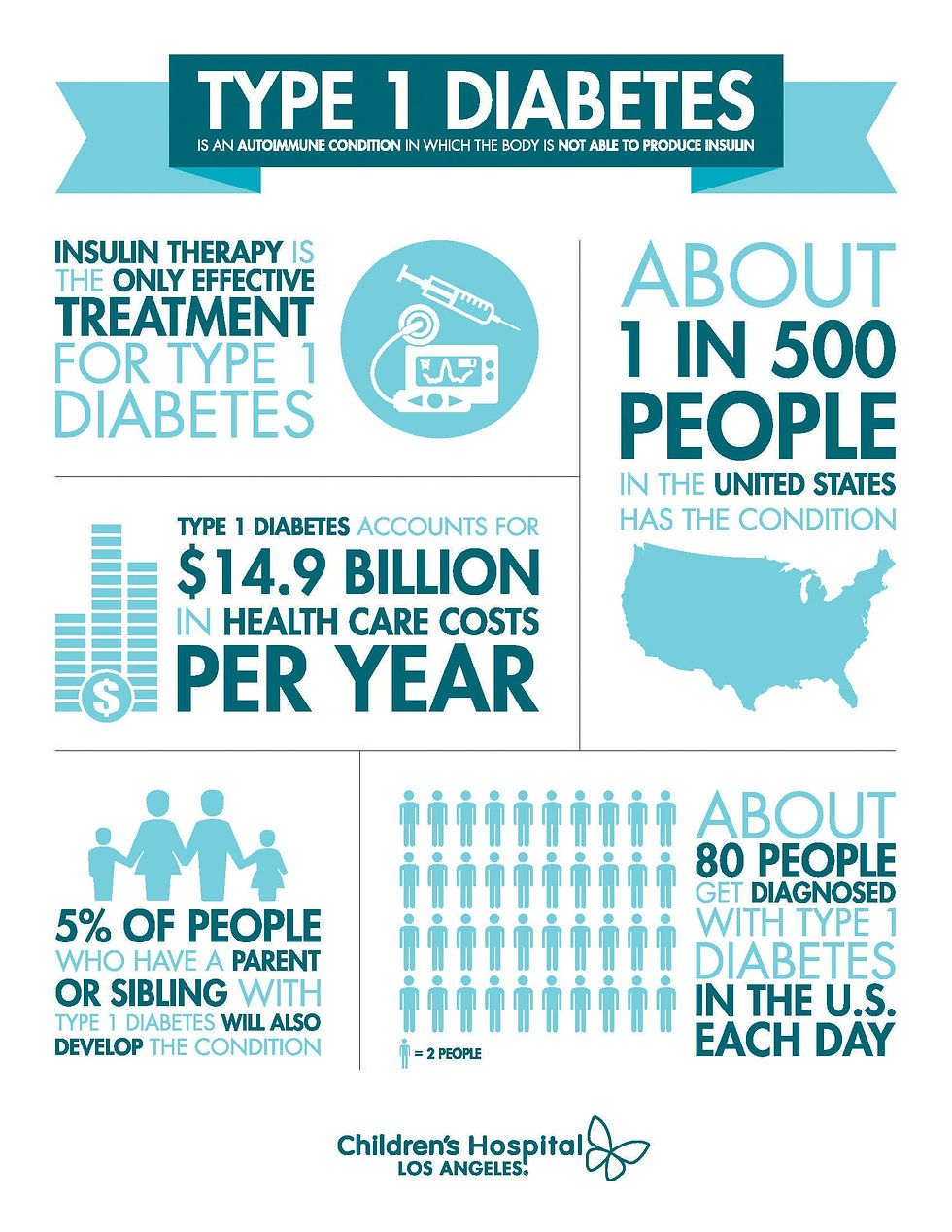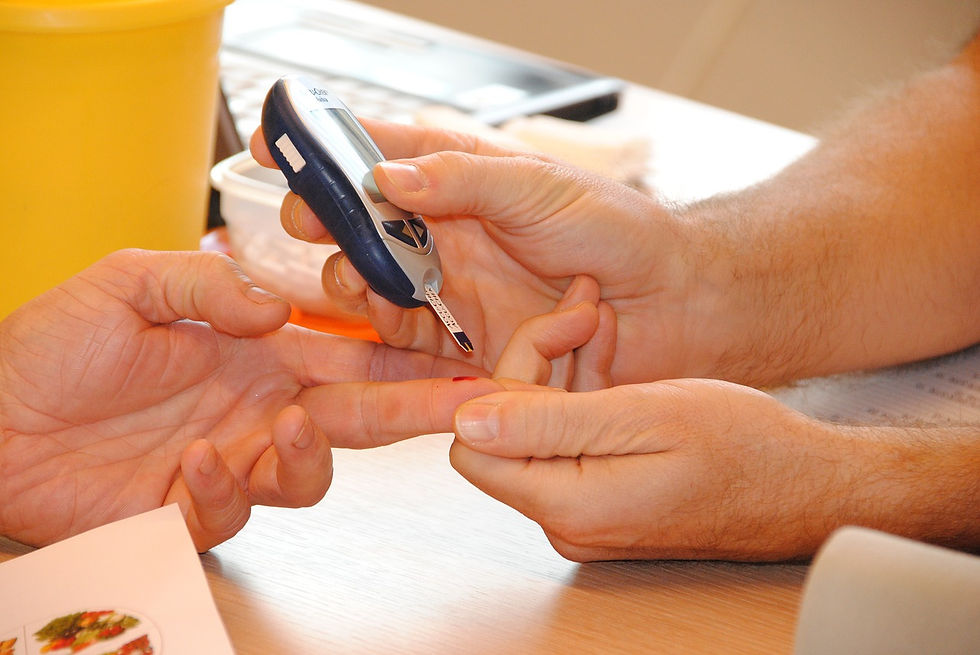
If you live with diabetes, have diabetic friends or relatives, or work in healthcare, you know that there is a whole list of terminology that people with diabetes use to communicate with. Before my initial diagnosis, I had heard a few of the common terms used in school during nutrition courses, but now, I basically have a Ph.D. in diabetes lingo! Continue reading so you can, too!
Essential Terms
First and foremost, let's cover the essential terms that you'll need to know to communicate with your physician and know what to look for on a nutrition menu! These terms are a must-know for maintaining your health and living with or caring for someone with diabetes.
Let's start with the basics!
Diabetes is a chronic disease that affects how the body either uses or produces insulin, the hormone that helps the body regulate blood sugar. There are multiple types of diabetes, such as Type 1 (T1D), Type 2 (T2D), Gestational, Latent Autoimmune Diabetes in Adults (LADA), and Maturity-Onset Diabetes of the Young (MODY), and other rare types! However, 95% of people with diabetes live with T2D!

Type 1 Diabetes:
T1D is a rarer form of diabetes than T2D, as only 5-10% of diabetics have type one, yet it is still one of the more common forms! Since T1D is relatively rare, it is commonly misunderstood or easily confused with Type 2 Diabetes. However, it is essentially a completely different disease!
Type 1 is an auto-immune disease where the immune system attacks the insulin-producing cells in the pancreas. Since those with T1D cannot produce their own insulin, they require insulin therapy daily to stay alive. Both children and adults can be diagnosed with T1D. Type 1 is genetic, but it is not necessarily hereditary. Read this blog to learn more about the cause of T1D and what living with T1D is like!

Type 2 Diabetes:
T2D is the most common form of diabetes and affects 90-95% of those living with diabetes. T2D is connected to genetic factors and is usually hereditary. Those with T2D still produce insulin, but either doesn't produce enough or have insulin resistance, meaning their body doesn't properly use the insulin they make. T2D is managed through either lifestyle changes or additional treatment options, like medication or insulin therapy.
Most harmful diabetes stereotypes and stigma associated with living with diabetes are based on incorrect or oversimplified assumptions related to Type 2.
To understand what blood sugar (BS), sometimes referred to as blood glucose, is, it's important to understand why it's important. Glucose is what your body converts the food you eat into, and it's what your body, including your brain and other muscles, uses for energy—meaning how you function. Glucose enters the bloodstream, and insulin helps your muscle's receptors use the glucose for energy. BS is measured in terms of how much glucose, or sugar, is in the bloodstream. A non-diabetic individual usually measures between 70-130 milligrams per deciliter (mg/dl), tested through using a meter or continuous glucose monitor.
Blood sugar can either be low, meaning below about 70 mg/dl depending on the individual (hypoglycemia), normal (70-120 mg/dl in a non-diabetic/about 100-180 mg/dl in a diabetic individual), or high, meaning above 180 mg/dl depending on the individual (hyperglycemia).
NOTE: These numbers can vary between individuals and what is best for their care. See your physician for their recommendations!
An individual's A1C is the average blood sugar measurement over about 90 days. This is what a physician will use as a basis for how well a diabetic is managing their diabetes.
Insulin:
Insulin is a hormone produced by the pancreas in a person without diabetes. Insulin helps breakdown glucose in the bloodstream and ensures that your body is utilizing the energy you get from the food you eat. For a T1D, the body can no longer produce its own insulin, so either multiple daily injections (MDI) of insulin is required or the use of an insulin pump. Check out this 47-second video to learn more!
Carbohydrates, or carbs, are one of three basic macronutrients. In simple terms, carbs are either simple sugars or complex sugars (think starches). When a person eats carbs, the body converts both simple and complex carbs into glucose for energy. For a T1D person, carbs that are consumed in all forms need to be accurately counted so that the proper dosage of insulin can be taken to ensure glucose doesn't remain in the bloodstream, and so the body can use the glucose for energy. For a T2D person, experts recommend limiting carb intake, increasing physical activity, or a number of other lifestyle changes to manage the disease.
Technology Terms
Now that we have a foundational understanding of diabetes terms, I'll cover the basics of diabetes tech! For a more in-depth introduction to the latest in diabetic technology, check out this blog post!
Insulin Pump:
In short, insulin pumps are a small electronic insulin-delivery system. They are inserted into the skin through tubing or a cannula, depending on the type of pump, as a means for the body to regulate blood sugar. There are a few different brands, but I use a Tandem T-Slim X2. Check out my earlier blog to learn more!
Blood Glucose Meter:
Meters work to test the glucose in the bloodstream. There are various brands, but each basically works the same. To use a meter, individuals must prick their finger with a lancing device and place a small amount of blood on a lancet, which is then tested by the meter to indicate the BS level.

Continuous glucose monitors (CGM) work to measure blood glucose continuously, instead of at random intervals like a meter. Advanced CGMs, like the Dexcom, keep a record of past BS levels and present a detailed line graph to track trends. Check out images, learn about the different types, and view more information here!
Thanks for taking this crash course in diabetes lingo! What terms do you and your family and friends use?! Share in the comment section down below!
תגובות